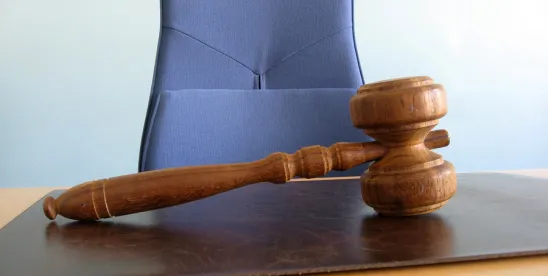As a result of Coronavirus Disease 2019 (COVID-19), some federal courts have severely restricted access, including closing some branches or divisions, postponing proceedings, or limiting in-person appearances. In the CARES Act of 2020, Congress provided the federal courts with temporary authorization to excuse personal appearances in federal criminal cases. Under Section 15002(b) of the CARES Act, federal district courts are authorized to permit appearances by videoconference or telephone upon findings by the Judicial Conference of the United States that COVID-19 will materially affect the federal courts generally or particular districts.
On March 29, 2020, the Judicial Conference of the United States found specifically that “emergency conditions due to the national emergency declared by the President under the National Emergencies Act (50 U.S.C. § 1601, et seq.) with respect to the Coronavirus Disease 2019 (COVID-19) have materially affected and will materially affect the functioning of the federal courts generally.” Based on this finding by the Judicial Conference, all district courts may now permit videoconference or telephonic appearances under certain circumstances. See U.S. court orders and updates during the COVID-19 pandemic, including those under the CARES Act.
Videoconference or Telephonic Appearances for Federal Non-Felony Plea or Sentencing Proceedings
The chief judges in each district (or, if the chief judge is unavailable, the senior most active judge or the chief judge of the circuit in which the district sits), either on application of the attorney general or on the court’s own motion, may “authorize the use of video teleconferencing, or telephone conferencing if video teleconferencing is not reasonably available” for the following proceedings:
- Detention hearings (18 U.S.C. § 3142)
- Initial appearances under Rule 5 of the Federal Rules of Criminal Procedure (“Rule”)
- Preliminary hearings under Rule 5.1
- Waivers of indictment under Rule 7(b)
- Arraignments under Rule 10
- Probation and Supervised Release Proceedings under Rule 32.1
- Pretrial release revocation proceedings (18 U.S.C. § 3148)
- Out-of-district arrests under Rule 40
- Misdemeanor pleas and sentencing under Rule 43(b)(2)
- Proceedings under the Federal Juvenile Delinquency Act (18 USC, Chapter 403)
Videoconference or Telephonic Appearances for Federal Felony Pleas and Sentencing Proceedings
Felony plea proceedings under Rule 11 and felony sentencing hearings under Rule 32, or the equivalent under the Federal Juvenile Delinquency Act, may also proceed by videoconference, or telephone conference if videoconference is unavailable, if the following conditions are met:
| 1. | A finding by the chief judge in each district (or, if the chief judge is unavailable, the senior most active judge or the chief judge of the circuit in which the district sits), either on application of the attorney general or on the court’s own motion, that felony pleas and/or sentencings “cannot be conducted in person without seriously jeopardizing public health and safety,” and |
|
| 2. | “[T]he district judge in a particular case finds for specific reasons that the plea or sentencing in that case cannot be further delayed without serious harm to the interests of justice.” |
Consent Required for Videoconference or Telephonic Appearances
In each of the situations discussed above, the videoconference or telephone-conference appearances “may only take place with the consent of the defendant, or the juvenile, after consultation with counsel.”
Duration of Authorization
Congress’s authorization lasts either for (a) 30 days after the date on which the presidentially declared national emergency terminates, or (b) the date on which the Judicial Conference finds that the conditions that gave rise to the emergency declaration “no longer materially affect the functioning of either the Federal courts generally or the district court in question.” Additionally, the chief judge for each district is required to review the court’s authorization for videoconference or telephonic appearances every 90 days so long as the national emergency declaration or the Judicial Conference’s finding remains in effect.



 />i
/>i
